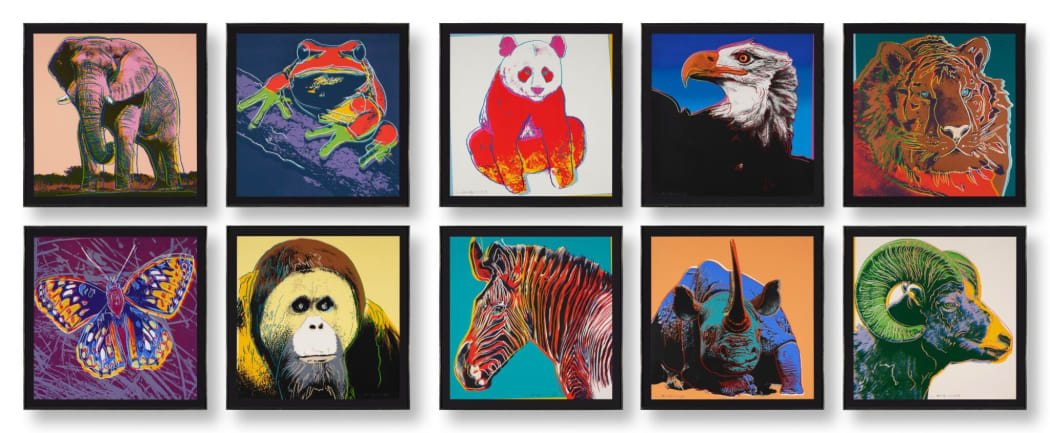
Andy Warhol’s Endangered Species portfolio, created in 1983, is one of the most compelling intersections of art and activism in contemporary art history. Best known for his portraits of celebrities and consumer goods, Warhol turned his focus to wildlife conservation with this vivid, politically resonant body of work. Commissioned by art dealers Ronald and Frayda Feldman, longtime supporters of environmental causes, this ten-print silkscreen series depicts animals facing the threat of extinction, rendered in Warhol’s unmistakable pop art style.
Each image in the Endangered Species portfolio captures the likeness of a different animal, including the African Elephant, Siberian Tiger, Bald Eagle, Giant Panda, and Black Rhinoceros. Warhol applied his signature technique of bold outlines and electric colors to create visually arresting portraits that both glamorize and immortalize these endangered animals. By treating them with the same aesthetic attention he once reserved for Marilyn Monroe or Elvis Presley, Warhol invited viewers to consider the symbolic weight and fragility of each species.
What sets Endangered Species apart is its dual impact—at once a celebration of the natural world and a sobering commentary on its vulnerability. The portfolio reflects Warhol’s acute awareness of media influence and public attention, using the language of celebrity to elevate animals that might otherwise go unnoticed in the cultural conversation. This shift from the commercial to the ecological marks a subtle but significant evolution in Warhol’s oeuvre.
Today, Warhol’s Endangered Species prints are highly sought after by collectors and institutions alike. Their striking visual appeal, combined with their environmental message, continues to resonate with contemporary audiences. The portfolio remains a poignant reminder that art can do more than reflect the world—it can inspire action to protect it.
As interest in environmental art and socially engaged practice continues to grow, Andy Warhol’s Endangered Speciesstands as a powerful example of how pop art can transcend the superficial to engage with urgent global issues. Whether viewed in a gallery or part of a private collection, these prints speak volumes about the role of art in shaping cultural and ecological awareness.
